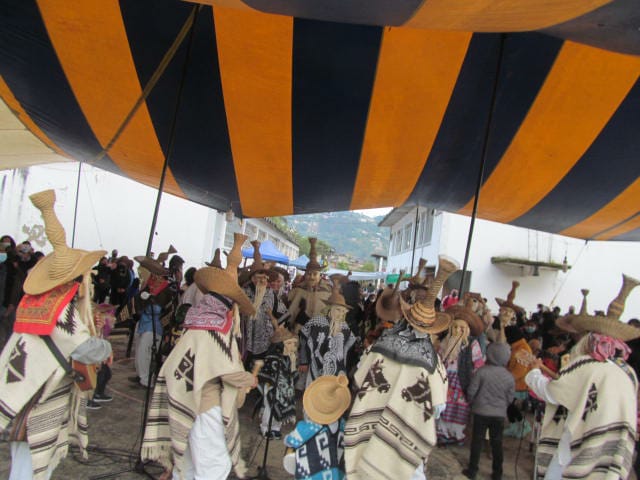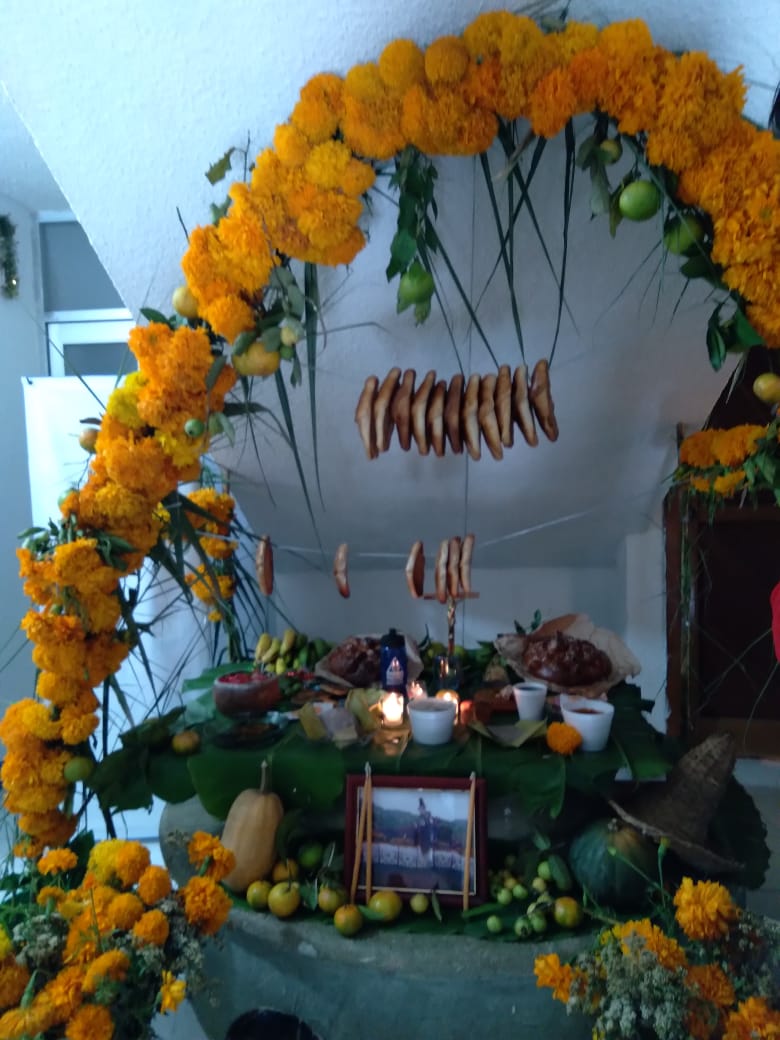The Huehuentones of Mazatec are the artists of death, and they are mostly active young people, or older than 40 to 50 years old who every October 27, prior to the All Saints’ Day, dress up outlandishly with different outfits; charros or wicker and rattan hats, masks with the faces of ring fighters, politicians, famous people or animals, and in short, the masked men are the maximum cultural, artistic and spiritual expression in the celebration of the faithful departed.
They also wear jonote tree masks made by artisans, blanket shorts and shirts, jorongos, huaraches, tennis shoes, who with mysticism and spirituality come out to dance in houses, public places and cemeteries in the traditional festival of the dead, ending their performance. the fifth of November. In the mother tongue it is pronounced “Cha-sho-ó”, which translated into Spanish means “Men who spring from the navel”, the truth is that these happy singers and dancers, including restless children, adolescents and even women.
During their tours through streets, avenues and sidewalks they cause the curiosity and sensation of the people who see them sing, dance and make jokes, for this reason the majority of Mazatec families, visitors and strangers do not miss this unique show without equal, nothing to see with US Halloween movies.
It is in the Mazatec region of Oaxaca where this ethnic group, located to the northwest of the entity, maintains this cultural heritage of the ancestors very deeply rooted and the municipalities most fond of interpreting the role of the souls of the beyond are Huautla de Jiménez, Santa María Chilchotla, San José Tenango, San Pedro Ocopetatillo, Eloxochitlán de Flores Magón and San Mateo Yoloxochitlán, and annually show their love for culture and spirituality, keeping this pre-Hispanic tradition very deep.
Likewise, for 20 years the famous huehuentones have been requested in different cities of the Mexican Republic taking their artistic ritual to death in All Saints Day, since the show they share is truly worthy of admiration.
In the municipality of Santa María Chilchotla, 40 minutes from Huautla, all groups of Huehuentones have a chief. A group can be made up of 15 to 30 “masked”; one or two violinists, a couple of guitarists and an element that plays the teponaxtle (drum made with goat skin) that performs the mysterious tan-tan-tan; so-so-so, so-so-so.
In the center and neighborhoods they are allowed to enter the houses to sing and dance, and the elderly people usually call them “Los Chajma” (The blacks). In an interview with the cultural promoter Alberto Prado Pineda, he comments that the nickname is because they sing and dance at night, and that Chilchotla is the “cradle of the Huehuentones” because here their performance is more mystic. Huehuentones can be drivers, masons, students, day laborers, bakers and volunteers, they have to put up with 10 nights of continuous sleeplessness, the duration of the festivity.
The interviewee adds that to be a true chamberlain of death requires a lot of love, passion and dedication, that is why the huehuentones Chilchotlecos keep a great secret before going out to participate from seven at night to six in the morning, either in spaces with public lighting or in the dark, because the chief or the elements carry hand lamps to illuminate the narrow paths where they go up and down, since their hobby is very strong and they do not mind falling when tripping over stones or trunks in the way, the important thing is to bring joy and nostalgia to their relatives, friends and acquaintances who receive them regardless of whether it is night or early morning.
Alberto Prado trusts that the spiritual secret of “Los Chajma” is that in the pantheon they make an oath to endure 10 nights, and right there they cover their faces and disguise their bodies. They wear handkerchiefs under the masks since they sweat from singing and dancing so much and with that garment they wipe the sweat. They put on old or regular (but adequate) shoes since they will travel winding or flat paths where they will carry their messages of reflection, important anecdotes that humanity has lived on earth, heroic deeds, supernatural disasters, or mentioning jokes or sayings that make them laugh to the viewers.
In relation to the placement of the altars to receive the faithful departed in the homes, these are made with fresh reeds, food, fruits, drinks, candles and incense from October 27, while at noon on the 31st, people from Different ages thunder rockets and rockets and in such a way the Mazatecs receive their faithful departed (little angels), since according to belief and tradition it is when they arrive from the underworld to live with their loved ones still on earth, who will be in contact spiritual from October 27 to November 5 of this year.
The festival of All Saints is the one with the greatest physical and economic movement in this Mazatec area, since thousands of migrants who are working in different parts of the Mexican Republic arrive in the region, entering as visitors to light candles. to their deceased in the pantheons of this Mazatec mountain range and thereby demonstrate their love and respect for their dead. There are dozens of buses and suburban buses that transport Mazatecs from Mexico City, Puebla, Tehuacán, Oaxaca, Orizaba, Córdoba, among other cities.
White and red candles are what the Mazatecs consume the most in large stores in Huautla, apart from the zempazúchitl and rooster comb flowers that the Nahuatl and merchants of seasonal flowers sell in the center, candles, rockets, rockets. The evenings in the cemeteries are for children and adolescents on the afternoon of October 31 and the early morning of the 1st. November, and the afternoon of November 1, early morning and afternoon of November 2 will correspond to the dead of legal age, thus concluding another year of beliefs and customs, which in this 2022 there were evenings after suspending two consecutive years to cause of Covid-19.



